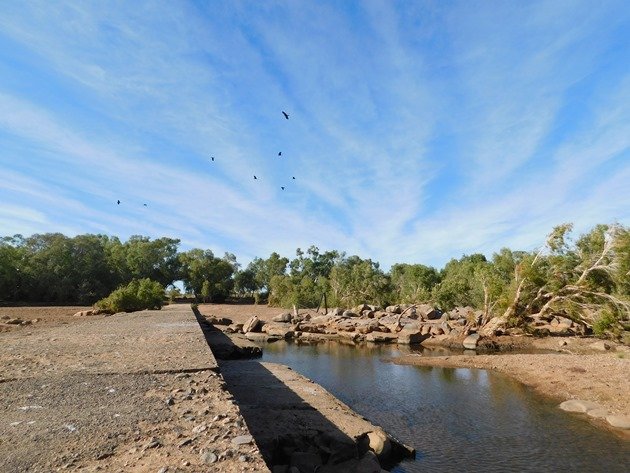
Western Australia is a very large state and often there are vast distances between towns. The closest town to Broome if we head south towards Perth is around 600kms. Derby lies around 200kms to the north. The capital city, Perth, is over 2000kms away. Darwin is actually closer, but we still have a hard border, so we can’t leave Western Australia. The Main Roads department has allocated rest areas throughout the state to encourage people to stop and rest on long trips. The rest areas vary, but usually have a composting toilet, rubbish disposal, shade and picnic tables. You can plan your trip using the Travel Map.
Mary Pool rest area is located north of Broome between Fitzroy Crossing and Halls Creek. We always stop in to check out the remaining water in the pools and the bird-life. There are large trees offering shade and ample room for camping. Access used to be across the causeway until a few years ago. A detour was put in and it means that you can access the area all year round now. The river flows only briefly after heavy rain, but pools remain in the riverbed all year round.
Mary Pool
There are often several noisy bird species about, but that is quite normal in the Western Australian bush. Red-tailed Black Cockatoos, Little Corellas and Blue-winged Kookaburras are often present. It makes sense to go to bed with the birds in Western Australia, because they will wake you up early!
Little Corellas
Blue-winged Kookaburra
There are two good bowers amongst the trees. The Great Bowerbirds enjoy the visitors throughout the year and are constantly thieving! If you lose or need a teaspoon then the bowers can be a useful place to look. Once you observe the Great Bowerbirds you can easily work out where they are heading with the “treasures” that they acquire.
Great Bowerbird bower
Around the remaining pools there are often Black-fronted Dotterels, Straw-necked Ibis, Brolga, Magpie-larks, Australasian Darter, White-faced Heron, Little Egret, Great Egret, White-necked Herons, Little Pied Cormorants and Little Black Cormorants.
Black-fronted Dotterel feeding
The finches are always well represented with Zebra Finch, Double-barred Finch and sometimes you are lucky enough to get brief glimpses of Pictorella Mannikins. There are always Peaceful Doves, Diamond Doves, Crested Pigeons and Bar-shouldered Doves coming in for water.
Pictorella Mannikin and reflection
Galahs, Cockatiels and Budgerigars all visit for a drink. The Galahs will spend a few moments at the water, but Cockatiels and Budgerigars are renowned for their brief dips at the water’s edge. The Budgerigars tend to become a blur of green as you attempt to photograph them!
Budgerigars briefly swooping through for water
Depending on which native plants are flowering the area can be very good for the Honeyeaters. It is not uncommon to find a good mix of species including White-gaped Honeyeater, Brown Honeyeater, Yellow-tinted Honeyeater, White-throated Honeyeater, White-plumed Honeyeater, Rufous-throated Honeyeater and Grey-fronted Honeyeater. We always make sure there is a branch for the birds to easily access the water and they soon make use of it.
Yellow-tinted Honeyeaters drinking from the branch
Yellow-tinted Honeyeater and Grey-fronted Honeyeater using the branch
There are plenty of other birds in the area that you are likely to encounter. Raptors are usually represented by Black Kites, Whistling Kites, Brown Goshawk, Wedge-tailed Eagle and Spotted Harrier. Both the Black-faced Cuckoo-shrike and White-bellied Cuckoo-shrike can be found amongst the trees. Rainbow Bee-eaters, Willie Wagtails, Paperbark Flycatchers, Mistletoebirds, Little Friarbirds, Grey-crowned Babblers, Striated Pardalotes, Pied Butcherbirds, Grey Shrike-thrush and Red-backed Fairy-wren can often be observed.
If you are travelling around Western Australia it is definitely worth dropping in at Mary Pool for a rest. It doesn’t have to be for long and you are likely to encounter a good mix of bird species regardless of the time of day.

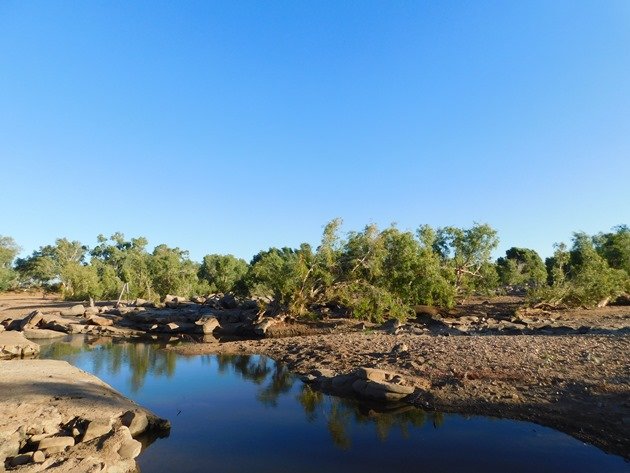
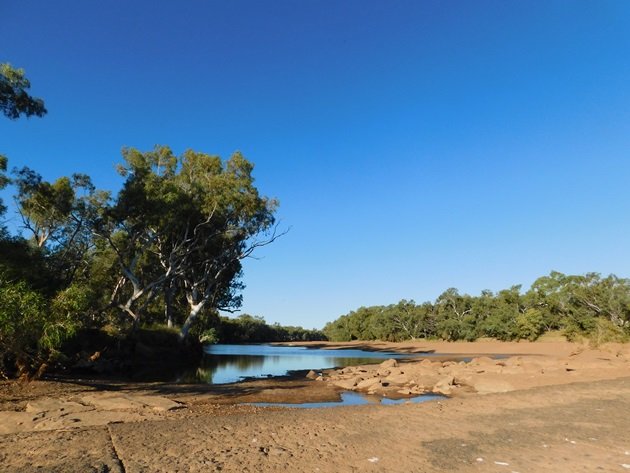
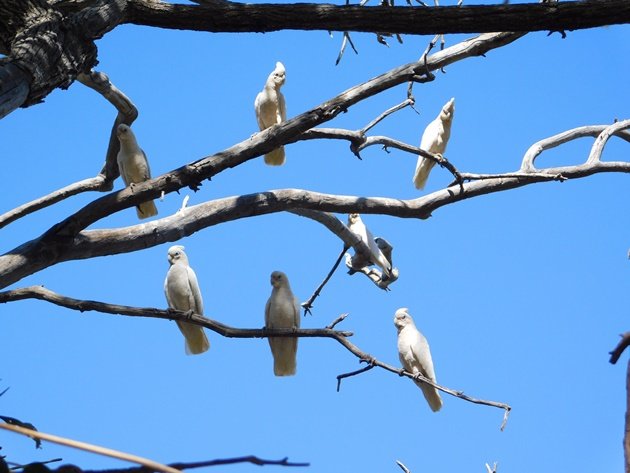
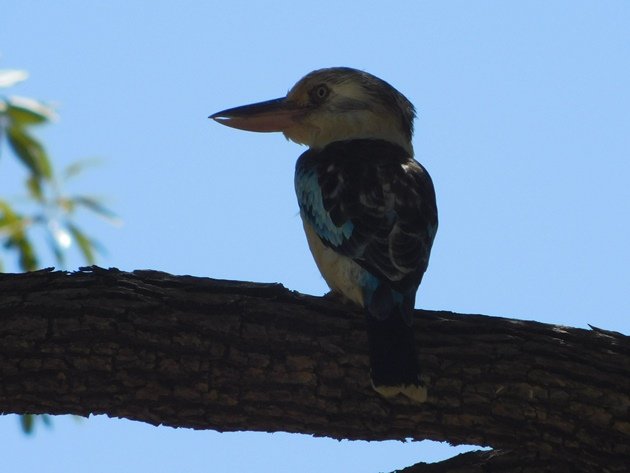
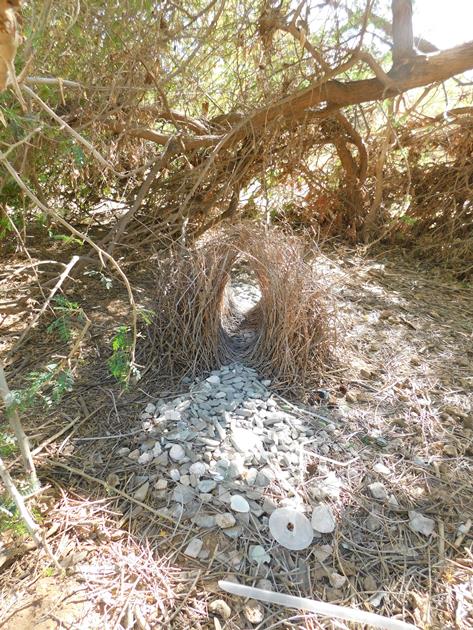
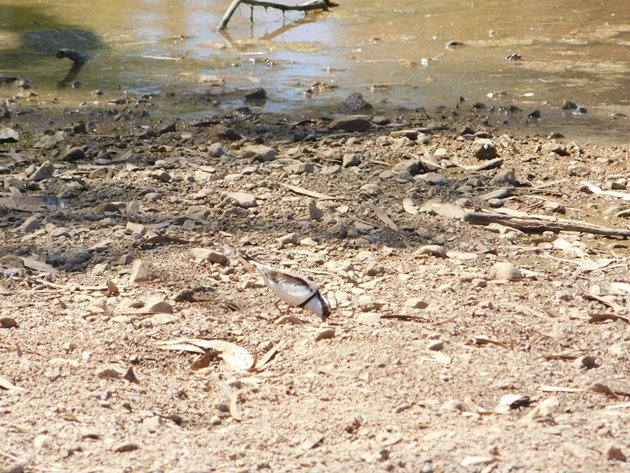
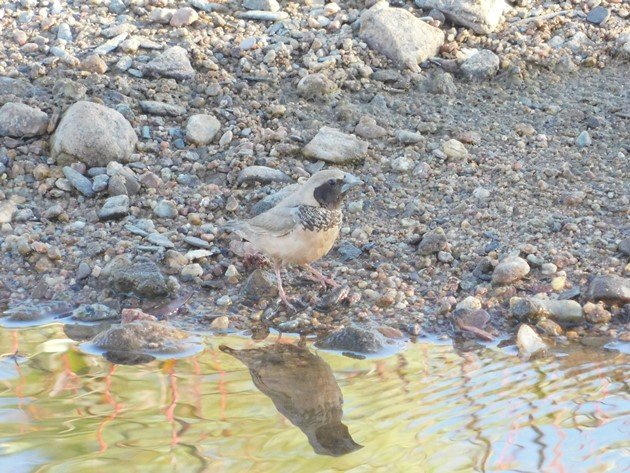
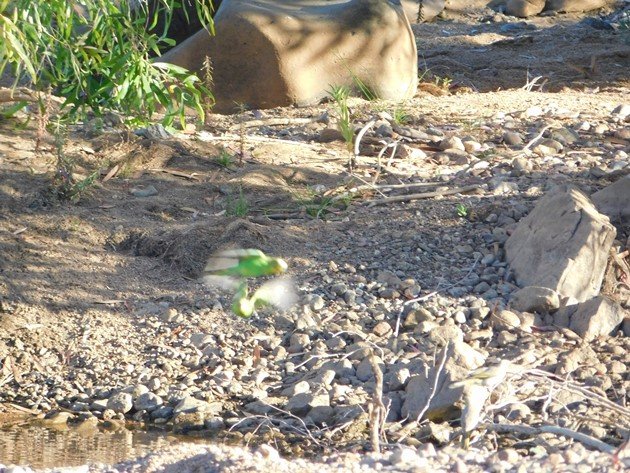
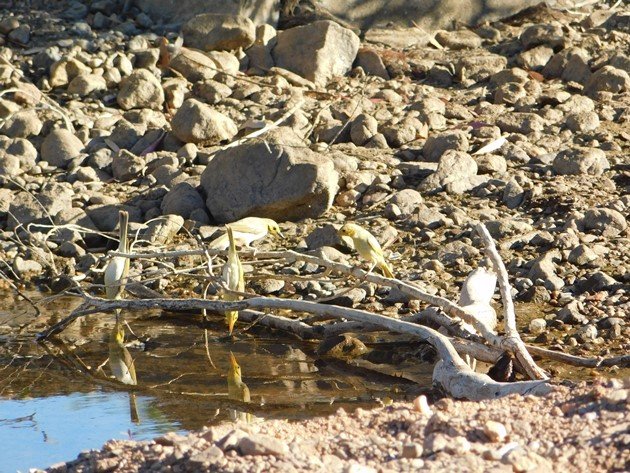
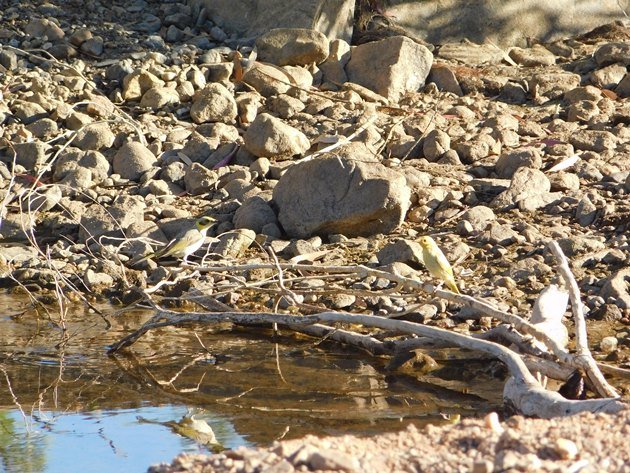










How magical, Clare, with the Blue-winged Kookaburra, the Bowerbird bower, and all the other birds!
Yes, it is a great place for birds!